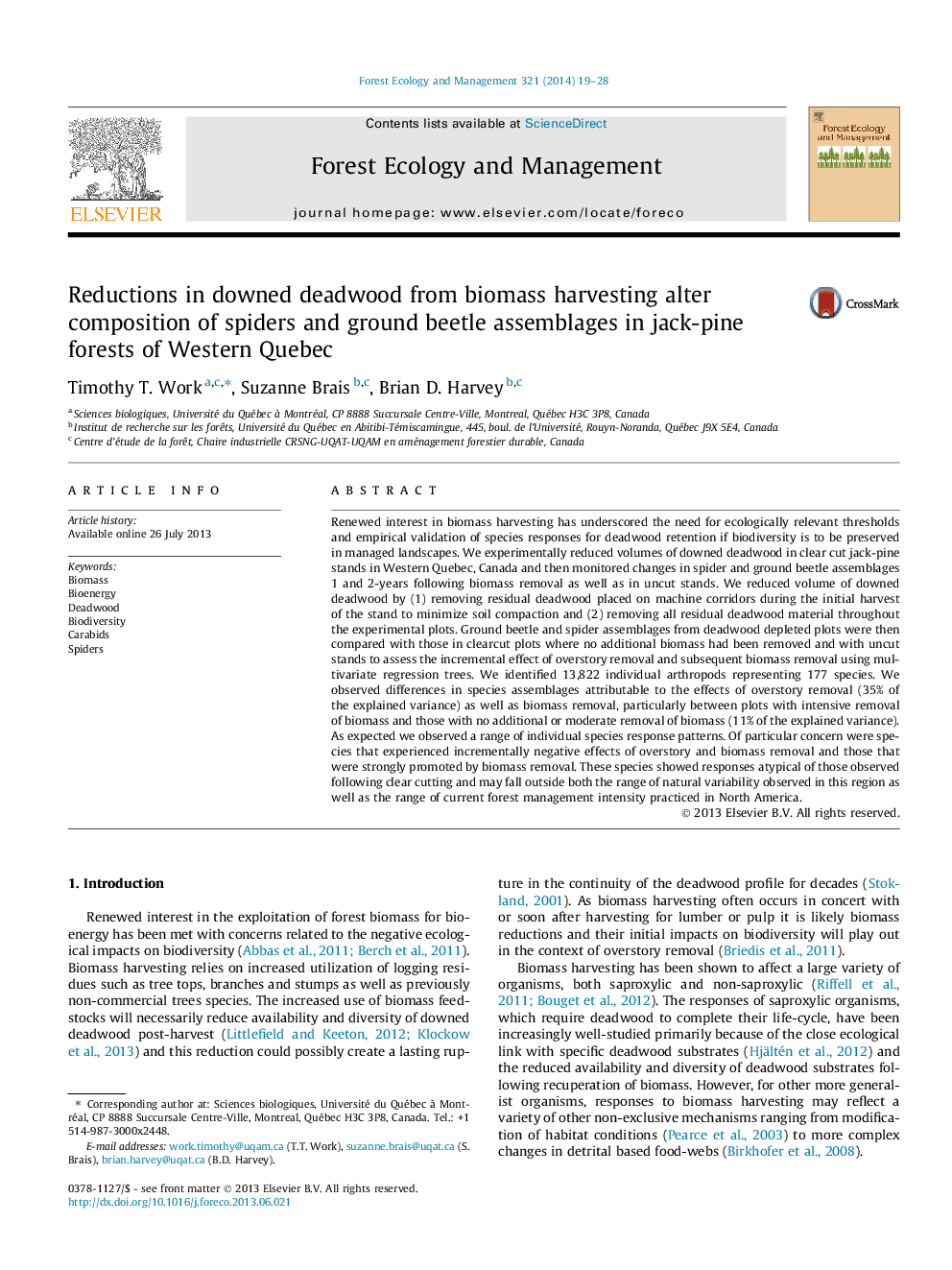| Article ID | Journal | Published Year | Pages | File Type |
|---|---|---|---|---|
| 86470 | Forest Ecology and Management | 2014 | 10 Pages |
•Intensive biomass removal altered spider and ground beetle assemblages.•Arthropod assemblages following intensive biomass removal differ from clearcuts.•Pardosa and Xysticus spiders replaced carabids after intensive biomass removal.•Retention targets for deadwood should fall between 45 and 95 m3/ha for these species.
Renewed interest in biomass harvesting has underscored the need for ecologically relevant thresholds and empirical validation of species responses for deadwood retention if biodiversity is to be preserved in managed landscapes. We experimentally reduced volumes of downed deadwood in clear cut jack-pine stands in Western Quebec, Canada and then monitored changes in spider and ground beetle assemblages 1 and 2-years following biomass removal as well as in uncut stands. We reduced volume of downed deadwood by (1) removing residual deadwood placed on machine corridors during the initial harvest of the stand to minimize soil compaction and (2) removing all residual deadwood material throughout the experimental plots. Ground beetle and spider assemblages from deadwood depleted plots were then compared with those in clearcut plots where no additional biomass had been removed and with uncut stands to assess the incremental effect of overstory removal and subsequent biomass removal using multivariate regression trees. We identified 13,822 individual arthropods representing 177 species. We observed differences in species assemblages attributable to the effects of overstory removal (35% of the explained variance) as well as biomass removal, particularly between plots with intensive removal of biomass and those with no additional or moderate removal of biomass (11% of the explained variance). As expected we observed a range of individual species response patterns. Of particular concern were species that experienced incrementally negative effects of overstory and biomass removal and those that were strongly promoted by biomass removal. These species showed responses atypical of those observed following clear cutting and may fall outside both the range of natural variability observed in this region as well as the range of current forest management intensity practiced in North America.
